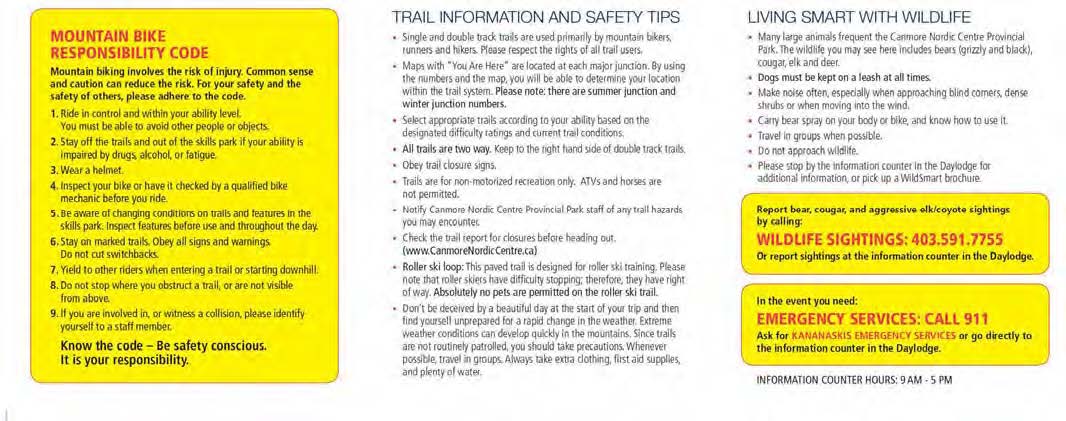It is important to keep all users safe and comfortable while on the trails, however, there are many preconceptions regarding trail users. This can create conflict between the users. Trail users seek different experiences and it is important to guide each user in a controlled manner.
Trail Etiquette Education
Educating users on proper trail etiquette helps to manage user conflict, preserve the environment, and improve the experience of all users on the trails. Trail etiquette includes educating users on passing etiquette, the rule of leaving no trace, and the hierarchy of the trail between hikers, cyclists, and perhaps other user groups. This includes the dismounting of cyclists when approaching equestrian traffic. There are many ways to educate users such as signs, paid staff trail patrols, volunteer trail patrols, peer education, clinics, and handouts. Avid trail users from other trail networks may also help in the education process by simply setting a good example. The information below is an example from the Summer Trail map at the Canmore Nordic Centre.
Dogs on trails:
Dogs on trails have the potential for social, environmental, and wildlife conflicts. Social conflicts may arise from dogs that may scare or obstruct other users from enjoying the trails. Environmental conflicts result from owners not picking up their dog’s feces or dogs that disturb the natural state of the corridor by digging or eating the vegetation. Another conflict occurs when dogs interact with wildlife. These interactions may be attacks from bears or cougars, or dogs may chase moose, elk, deer, or other wildlife. Educating users of trail etiquette, implementing rules and regulations, and enforcing the rules through trail patrols is the best defense against these type of trail conflicts.



